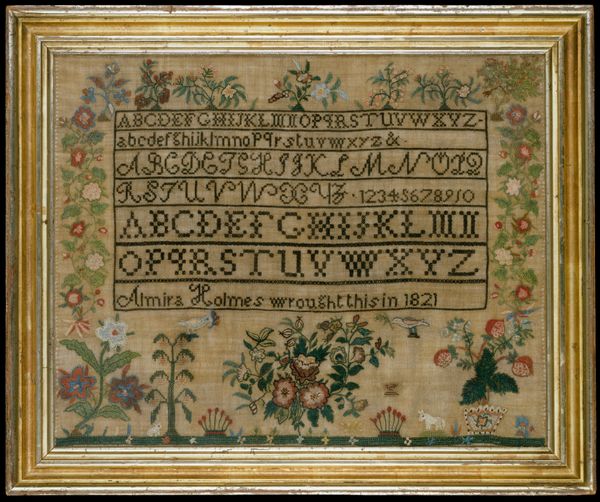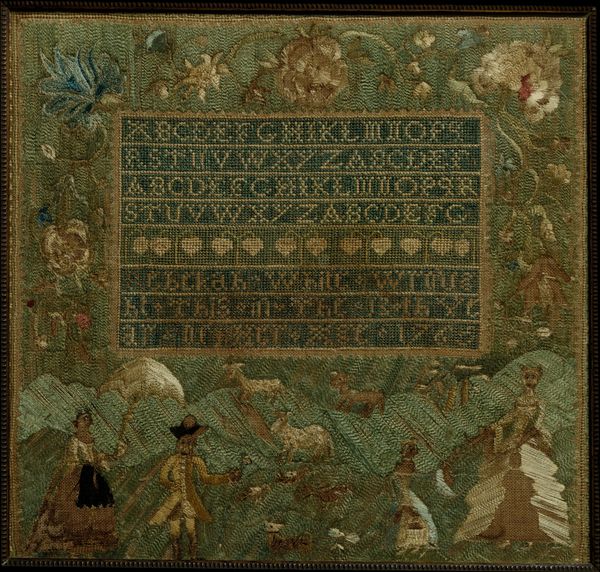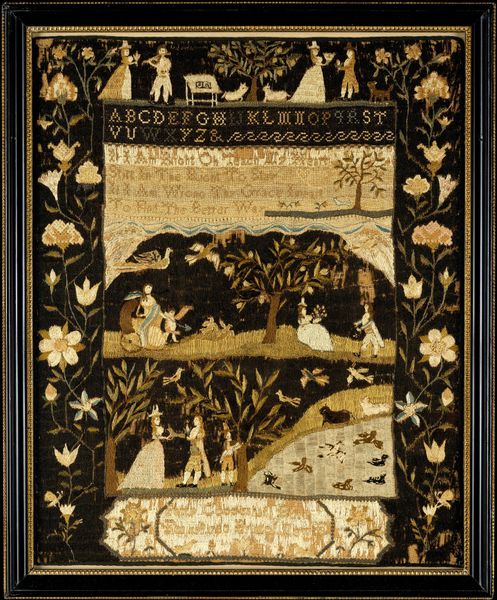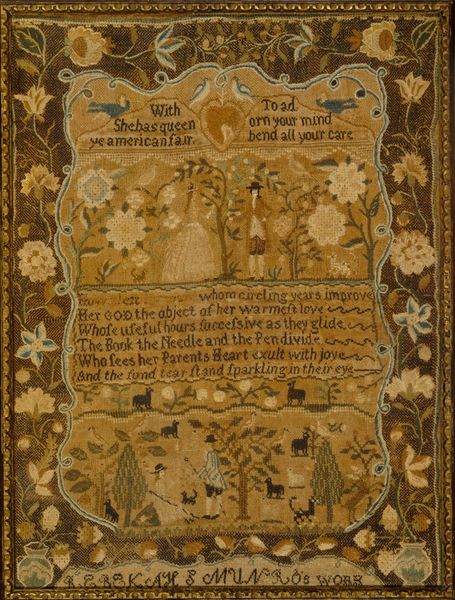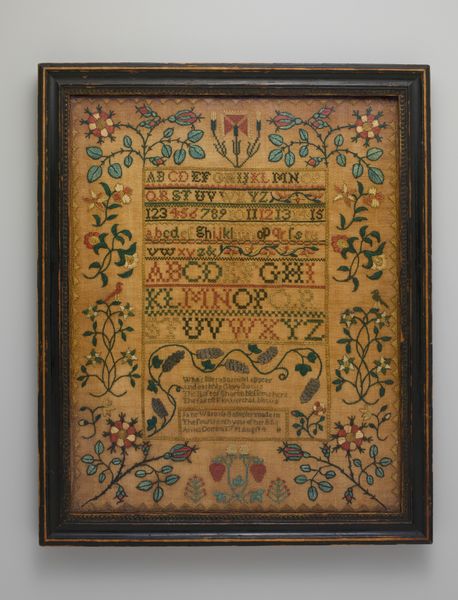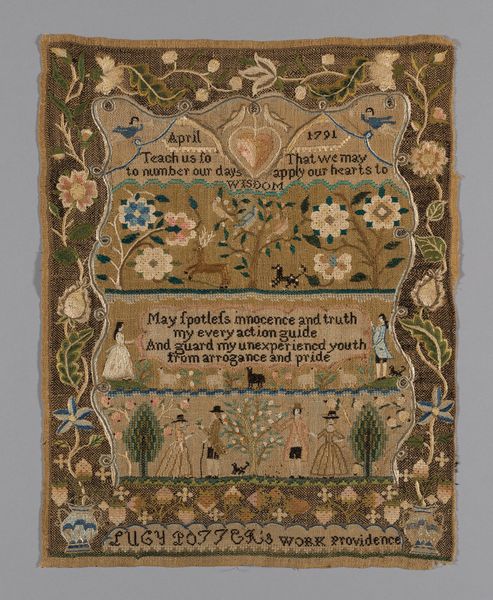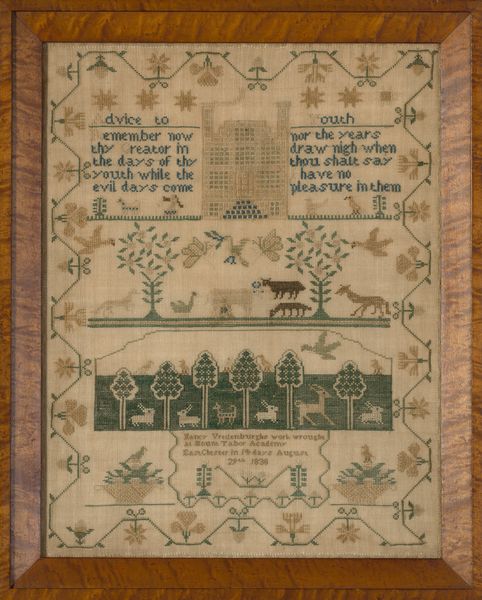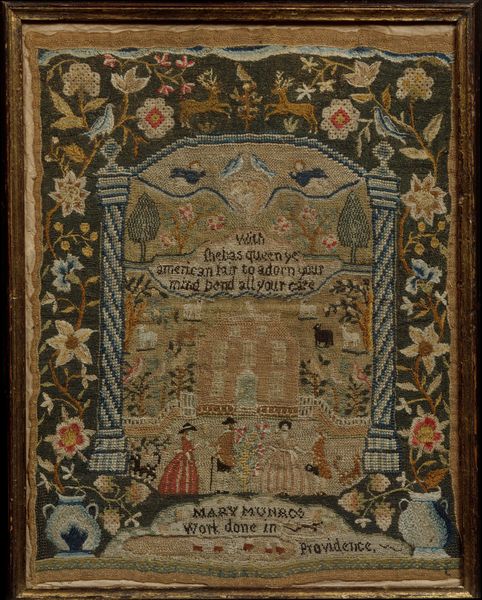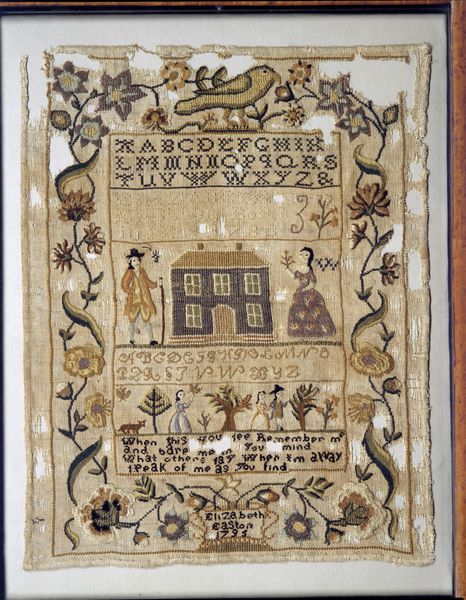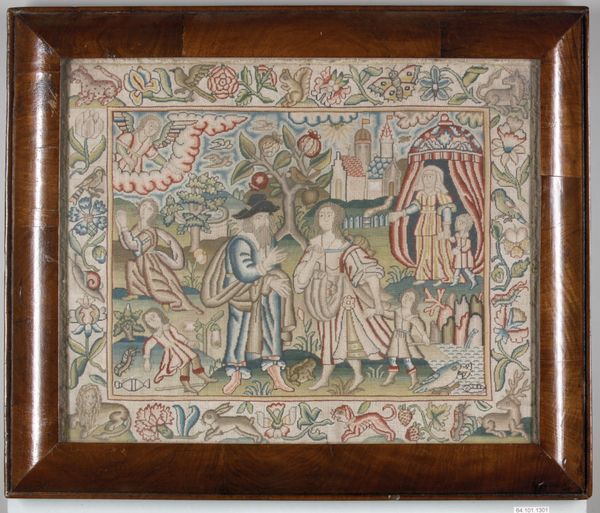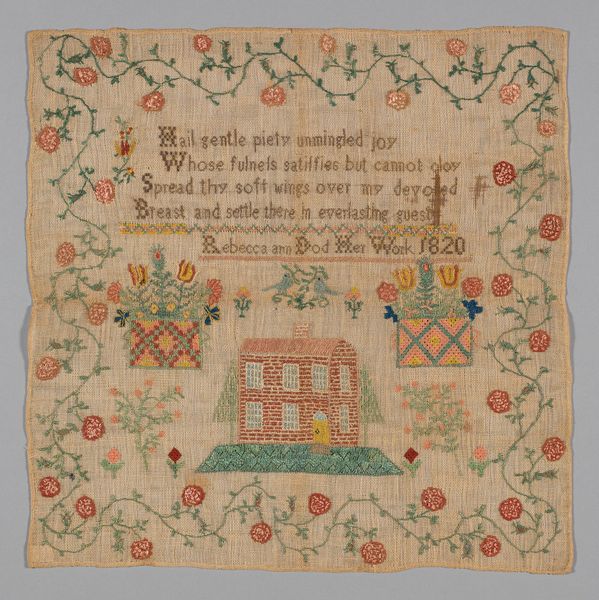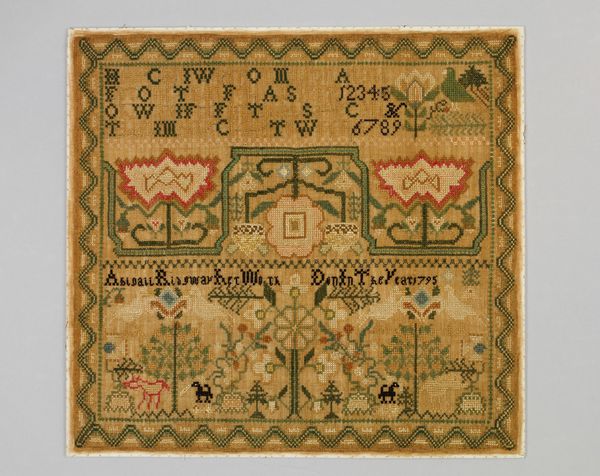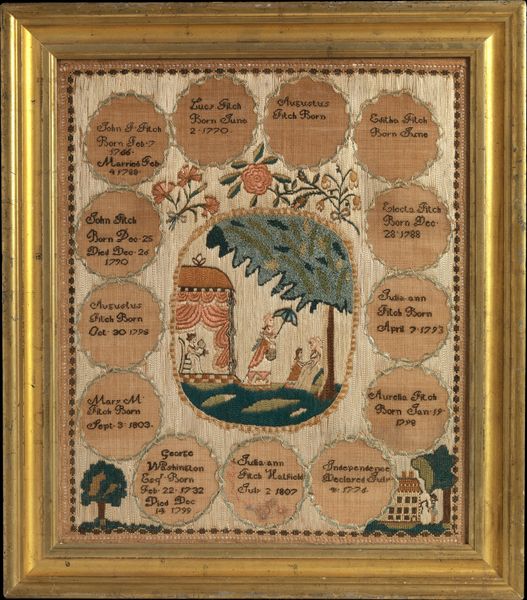
drawing, textile
#
drawing
#
animal
#
landscape
#
bird
#
textile
#
flower
#
figuration
#
brown and beige
#
folk-art
#
brown beige
#
men
Dimensions: 12 1/2 x 10 in. (31.8 x 25.4 cm)
Copyright: Public Domain
Editor: We are looking at an embroidered sampler made in 1784 by Mary Austin. It's at the Met in New York. There is something very quaint about it, and almost a little sad, like a relic of childhood and a very different era. How do you interpret this work? Curator: This sampler speaks volumes about gender roles and education in the 18th century. It's far more than a simple craft project. The alphabet and numerals represent the core of a young woman's literacy training, essential for managing a household, but also indicative of limited opportunities beyond that domestic sphere. What does the depiction of nature suggest to you in relation to Mary’s world? Editor: I see a pastoral scene: plants, animals, a child-like rendering of a woman maybe? It’s a romantic vision, certainly. Perhaps even an idealization of womanhood in nature? Curator: Precisely. But I encourage you to consider the restrictions imposed by these ideals. The sampler subtly reinforces the notion of women as nurturing figures connected to the natural world but separate from the public sphere. The act of embroidery itself was a carefully prescribed activity that reinforced notions of female patience and docility. And what about Salem – any other contexts that come to mind beyond a placid scene of embroidery practice? Editor: Salem. Wasn’t that where the witch trials took place a century before? Curator: Exactly! Salem reminds us to consider hidden or forgotten narratives. Do you see parallels between the embroidery as carefully "contained," decorative expression and a carefully "contained" and regulated womanhood? This needlework isn't just decorative; it is a document, a quiet protest, perhaps, within the lines. Editor: That makes me think about the power of textiles as a medium for self-expression in a world where women's voices were often suppressed. I learned a lot about reading hidden meanings in this type of art. Curator: It's about interrogating these seemingly simple objects to understand the complex cultural and political forces at play. Never underestimate what can be revealed from seemingly straightforward works!
Comments
No comments
Be the first to comment and join the conversation on the ultimate creative platform.
